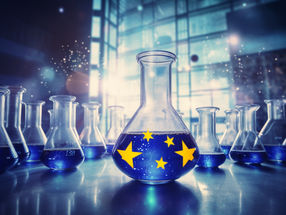ECHA to add 15 new substances of very high concern to the Candidate List
Advertisement
ECHA´s Member State Committee identified 15 new chemical substances for the Candidate List of substances of very high concern. The List will formally be updated in January 2010.
The Member State Committee agreed unanimously that 15 new substances of very high concern (SVHC) should be put on the Candidate List. Six of these substances were identified in a written procedure and eight at a Committee meeting in Helsinki. One substance, lead chromate, will be included in the Candidate List without involvement of the Member State Committee, because ECHA received no comments on its hazardous properties in the preceding public consultation.
ECHA will include the 15 substances in the Candidate List in January 2010. The substances are listed below. Decisions on the need to subject these substances to authorisation will be taken later.
Anthracene oil: Persistent, bioaccumulative and toxic; Very persistent and very bioaccumulative; Carcinogen, category 21
Anthracene oil, anthracene paste, distn. lights: Persistent, bioaccumulative and toxic; Very persistent and very bioaccumulative; Carcinogen, category 22; Mutagen, category 23
Anthracene oil, anthracene paste, anthracene fraction: Persistent, bioaccumulative and toxic; Very persistent and very bioaccumulative; Carcinogen, category 22; Mutagen, category 23
Anthracene oil, anthracene-low: Persistent, bioaccumulative and toxic; Very persistent and very bioaccumulative; Carcinogen, category 22; Mutagen, category 23
Anthracene oil, anthracene paste: Persistent, bioaccumulative and toxic; Very persistent and very bioaccumulative; Carcinogen., category 22; Mutagen, category 23
The substances are mainly used in the manufacture of other substances such as anthracene and carbon black. They may also be used as reducing agents in blast furnances, as components in bunker fuel, for impregnating, sealing and corrosion protection.
Pitch, coal tar, high temp.: Persistent, bioaccumulative and toxic; Very persistent and very bioaccumulative; Carcinogen, category 2
Pitch, coal tar, high temp. is mainly used in the production of electrodes for industrial applications. Smaller volumes are dedicated to specific uses such as heavy duty corrosion protection, special purpose paving, manufacture of other substances and the production of clay targets.
Acrylamide: Carcinogen, category 2; Mutagen, category 2
Acrylamide is almost exclusively used for the synthesis of polyacrylamides, which are used in various applications, in particular in waste water treatment and paper processing. Minor uses of acrylamide comprise the preparation of polyacrylamide gels for research purposes and as grouting agents in civil engineering.
Aluminosilicate Refractory, Ceramic Fibres, Aluminosilicate Refractory: Carcinogen, category 2
Refractory ceramic fibres are used for high-temperature insulation, almost exclusively in industrial applications (insulation of industrial furnaces and equipment, equipment for the automotive and aircraft/aerospace industry) and in fire protection (buildings and industrial process equipment).
Zirconia Aluminosilicate, Refractory Ceramic Fibres: - Carcinogen, category 2
Refractory ceramic fibres are used for high-temperature insulation, almost exclusively in industrial applications (insulation of industrial furnaces and equipment, equipment for the automotive and aircraft/aerospace industry) and in fire protection (buildings and industrial process equipment).
2,4-Dinitrotoluene: Carcinogen, category 2
2,4-dinitrotoluene is used in the production of toluene diisocyanate, which is used for the manufacture of flexible polyurethane foams. The substance is also used as gelatinizing-plasticizing agent for the manufacture of explosive mixtures (e.g. for airbags in cars).
Diisobutyl phthalate: Toxic for reproduction, category 2
Diisobutyl phthalate is used as plasticiser for nitrocellulose, cellulose ether, polyacrylate and polyacetate dispersions, and as a gelling aid in combination with other plasticisers, which are widely used for plastics, lacquers, adhesives, explosive material and nail polish.
Lead chromate: Carcinogen, category 2; Toxic for reproduction, category 1
Lead chromate is used for manufacturing pigments and dyes, as a pigment or coating agent in industrial and maritime paint products or for embalming/restoring of art products. Further potential uses include as detergents and bleaches, photosensitive materials and for the manufacture of pyrotechnic powder.
Lead chromate molybdate sulphate red (C.I. Pigment Red 104): Carcinogen, category 2; Toxic for reproduction, category 1
Lead chromate molybdate sulphate red (C.I. Pigment Red 104) is used as a colouring, painting and coating agent in sectors such as the rubber, plastic and paints, coatings and varnishes industries. Applications comprise the production of agricultural equipment, vehicles and aircraft as well as road and airstrip painting.
Lead sulfochromate yellow (C.I. Pigment Yellow 34): Carcinogen, category 2; Toxic for reproduction, category 1
Lead sulfochromate yellow (C.I. Pigment Yellow 34) is used as a colouring, painting and coating agent in sectors such as the rubber, plastic and paints, coatings and varnishes industries. Applications comprise the production of agricultural equipment, vehicles and aircraft as well as road and airstrip painting. The substance is further used for camouflage or ammunition marking in the defence area.
tris(2-chloroethyl)phosphate: Toxic for reproduction, category 2
tris(2-chloroethyl)phosphate is mainly used as an additive plasticiser and viscosity regulator with flame-retarding properties for acrylic resins, polyurethane, polyvinyl chloride and other polymers. Other fields of application are adhesives, coatings, flame resistant paints and varnishes. The main industrial branches to use TCEP are the furniture, the textile and the building industry.
Other news from the department politics & laws
These products might interest you
Most read news
More news from our other portals
See the theme worlds for related content
Topic world Synthesis
Chemical synthesis is at the heart of modern chemistry and enables the targeted production of molecules with specific properties. By combining starting materials in defined reaction conditions, chemists can create a wide range of compounds, from simple molecules to complex active ingredients.

Topic world Synthesis
Chemical synthesis is at the heart of modern chemistry and enables the targeted production of molecules with specific properties. By combining starting materials in defined reaction conditions, chemists can create a wide range of compounds, from simple molecules to complex active ingredients.





































































